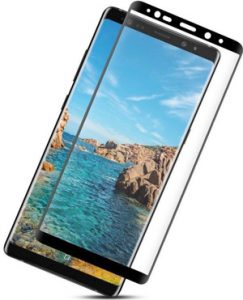 A mobile phone display is not only a way to get information, but also a data entry tool. The screen condition of a device can significantly affect the usability of the device.
A mobile phone display is not only a way to get information, but also a data entry tool. The screen condition of a device can significantly affect the usability of the device.
At the beginning of the production of devices, the upper layer on the monitor of gadgets was transparent plastic, which gradually lost its transparency and smoothness during operation. This significantly degraded the properties of transparency and electrical signal conduction. Some time ago, scientists invented a way to make a modern and practical material – silicate glass, which, after additional processing, became many times stronger than usual and at the same time had a thickness of less than 0.5 mm. This enabled smartphone manufacturers to make better devices.
Glass types
Unfortunately, the cost of producing the screen directly affects the final price of the device. Therefore, economy class phones continue to enter the market with a plastic display. Nevertheless, the screen of most devices can be made more reliable and stable. For this, special glass covers are produced, which are glued to the screen and improve its physical characteristics.
- 2D. It is an ordinary rectangular piece of glass that is glued only to the screen area. Now such options are almost impossible to find on the market.

- 2.5 D. Smooth glass with rounded edges and the necessary technological holes. Covers the entire front of the device.
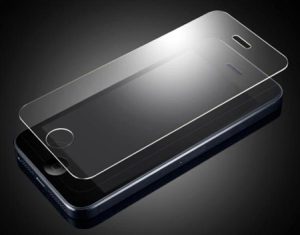
- Glass with colored frames. It has a painted top and bottom that match the color of the body of the smartphone and are less conspicuous.
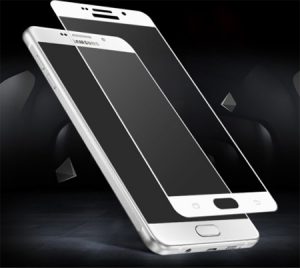
- 3D and 4D glass. The cover is produced specifically for displays with rounded edges. On such screens, there is no way to stick the usual coating, so the glasses are thick for a snug fit and protection.
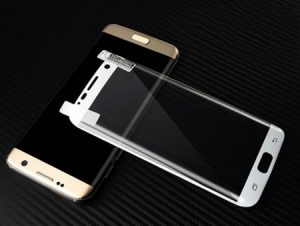
to the content
Protective glass sticker
To apply an additional layer to the smartphone screen, you need to follow a few simple steps:
- The room where the operation will be carried out must be free of dust. Microscopic particles caught under the glass cause the formation of air bubbles, which spoil the appearance of the device.
- Remove previous coating, if present, and wipe the screen to remove traces and dust particles. The kit usually comes with a wet wipe soaked in alcohol and a dry microfiber cloth.
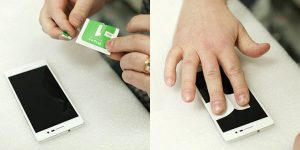
- Remove the backing from the adhesive side. If there are two protective films on the glass, then they are designated by numbers 1 and 2 in the order of removal.
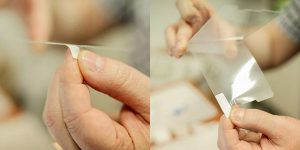
- Try on the glass to the device. Place it over the device at a distance of 4-5 mm and make sure that the required holes are aligned. If everything fits together, you can stick it on. Important! Hold the glass by the edge to avoid fingerprints and dirt on the adhesive.
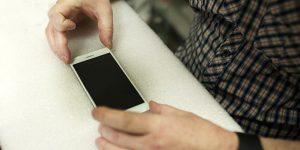
- If air bubbles have formed under the glass, then they must be driven out from under the coating by smoothing it with a napkin or a plastic spatula that comes with the kit. You need to move from the center to the edges.
- If dust particles get in the process of gluing the glass, you must lift the glass and remove the dust particles with an adhesive sticker or a piece of transparent tape. It is necessary to raise the edge of the glass, touch the adhesive side of the tape to the unnecessary element and remove it with a sharp motion.
- After that, it is necessary to return the glass to its place.
to the content
Removing the old coating
If it is necessary to remove already installed glass, it is important to proceed with caution. You need to start from one of the top corners. For the procedure, you should use a plastic card or a plectrum, as this reduces the risk of damaging the screen. Using solid metal objects may scratch or even crack the main display of your device.

to the content
The advantage of plexiglass over film
There are various protective coatings available on the market. They differ from each other in physical characteristics and basic material.
Glass is made from a special silicate mixture and is subjected to additional processing. As a result of all operations, the strength increases several times.
The film is made of transparent plastic and provides protection against scratches and abrasion. The thickness of the material is several microns. Sheets are available for specific models or universal sizes.
When choosing, you need to pay attention to the characteristics of the material:
- Surface type: matte or glossy.
- With a layer that prevents the formation of fingerprints and dirt.
- Thickness.
By protecting the screen of a mobile device, you can extend the lifespan and protect it from damage.
